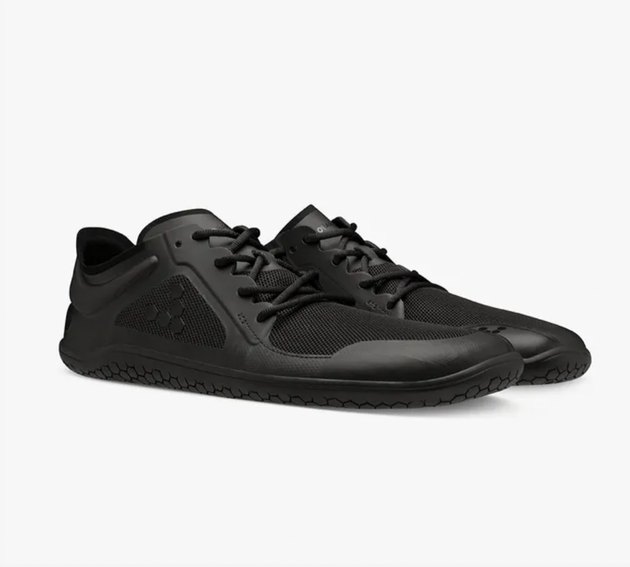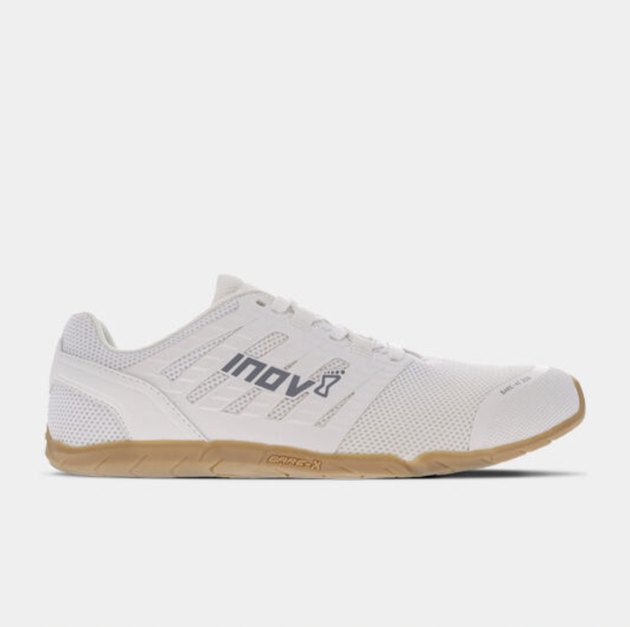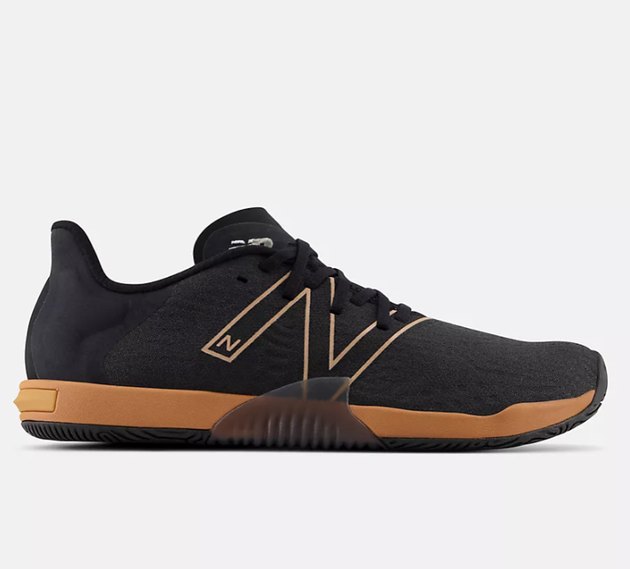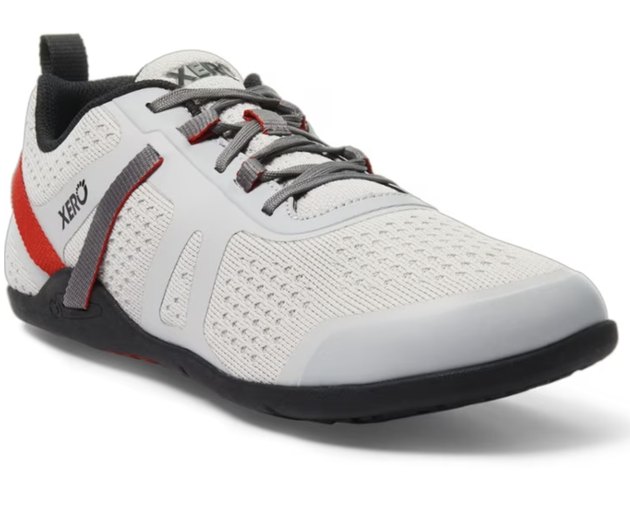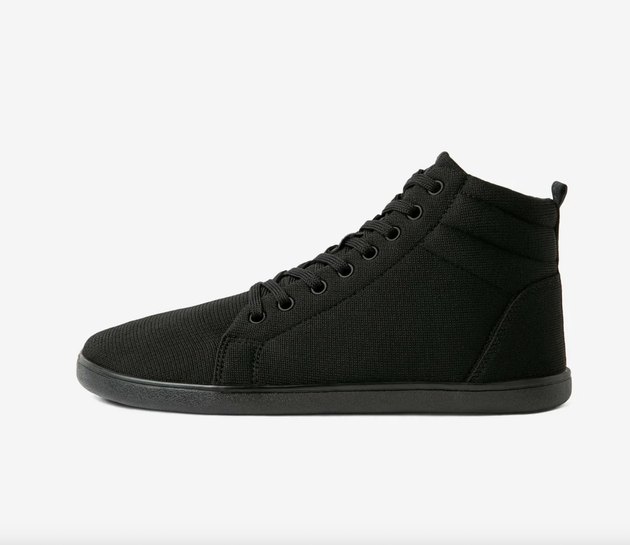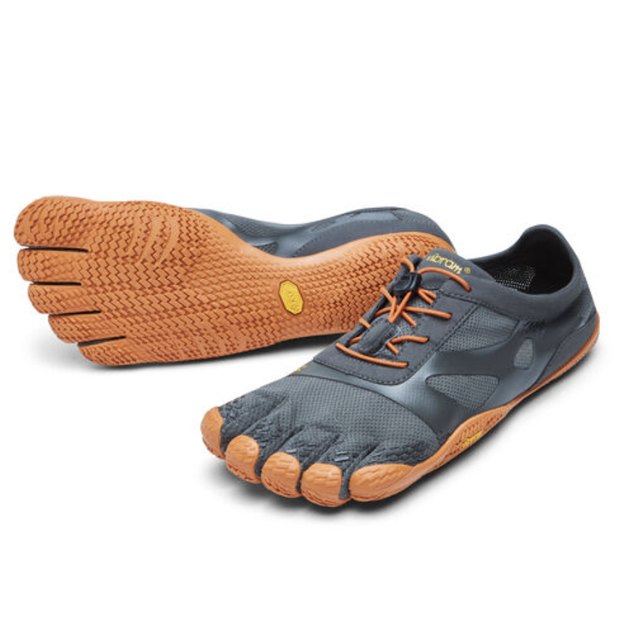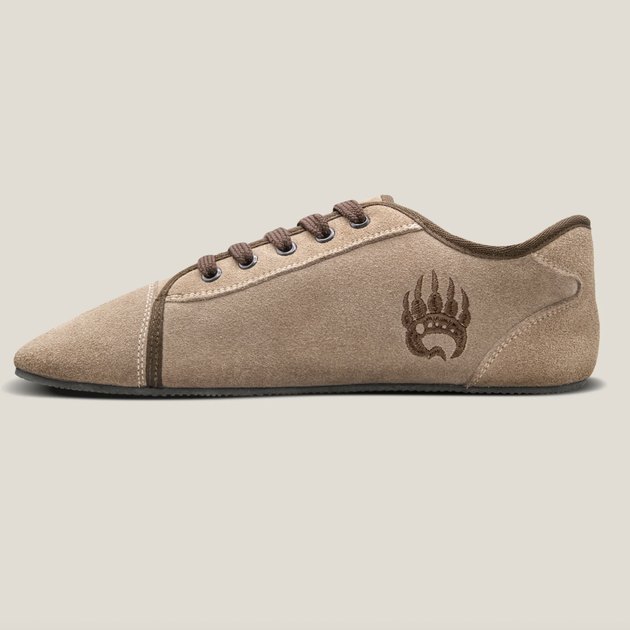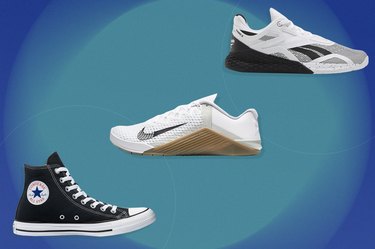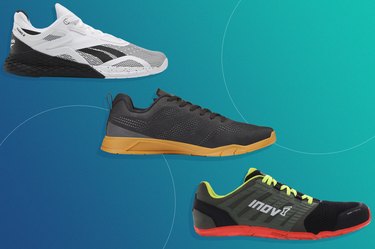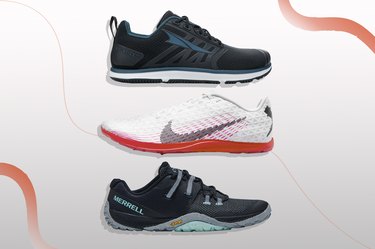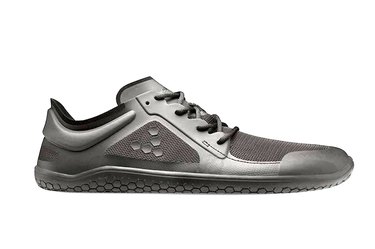
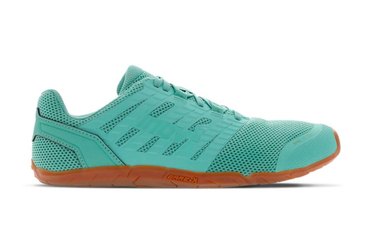

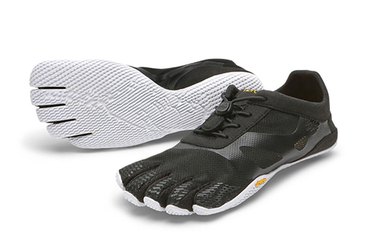
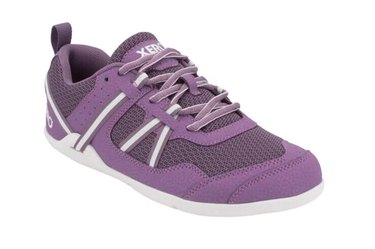
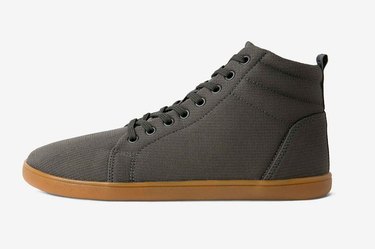

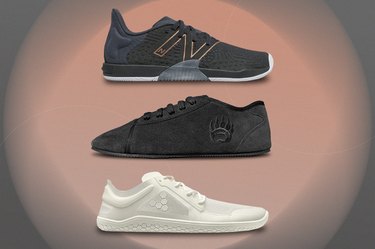

The barefoot running shoes that took the cardio world by storm have officially taken hold of the weight room. And thank goodness: Slipping on a pair of barefoot lifting shoes is one of the easiest (and most comfortable) ways to hit better lifts and build more strength.
If you haven't dipped your toe into barefoot training (yet), you may be wondering what minimalist training shoes actually are.
Video of the Day
Video of the Day
"They're essentially shoes that mimic the sensation of not wearing shoes at all," says Jack McNamara, CSCS, certified strength and conditioning specialist, exercise physiologist and senior lecturer in clinical exercise science at the University of East London.
To achieve that no-shoes feel, barefoot workout shoes feature:
- A wide toe box to allow your feet to spread naturally
- A thin, flexible sole so you can feel the ground beneath your feet
- Minimal to no cushioning
- No difference between the height of the heel and toe of the shoe — also known as "zero drop"
Ready to pare down your footwear? Check out the seven best shoes for barefoot lifting.
How We Chose
To ID the best of the best, we spoke with three personal trainers and lifting coaches about what they wear in the weight room and recommend to their clients. We also tapped them on the most important things to consider when shopping. We chose the following shoes based on the following criteria. You can learn more about how we cover products here.
- Fit
- Durability
- Comfort
- Style
Why Are Certain Shoes Marketed to Men or Women?
We make deliberate choices about the language we use, but most companies make and market shoes according to gender, so we have listed both women's and men's options below. The main difference is fit. However, materials, quality and comfort should be the same between gender-labeled pairs. Choose whichever fit feels best to you.
1. Vivobarefoot Primus Lite III
These barefoot weightlifting shoes offer a highly flexible upper and a wide toe box, which allows your feet to move more naturally, McNamara says.
The thin sole puts the minimum material needed between your feet and the ground. That way, you can really feel the floor beneath you. And it does this without compromising grip and durability.
You may also appreciate that these shoes are made from post-consumer plastic waste and other vegan materials.
2. Inov-8 Bare-XF 210 V3
These barefoot shoes for weightlifting come highly recommended by TJ Mentus, CPT, a certified personal trainer, weightlifting coach and expert with Garage Gym Reviews. They have a thin rubber sole, which Mentus says helps him more easily grip the floor with his feet for added support during lifts.
However, just because the sole is thin and flexible doesn't mean the shoe is flimsy. It offers durability, superb traction and even a layer of thermoplastic polyurethane (used in the soles of safety shoes) welded around the toes to protect your forefoot from crashing weights.
3. New Balance Minimus TR
While not strictly a barefoot shoe, this is an excellent pair to help you transition to thinner, less-supportive shoes in the future, McNamara says.
These shoes combine zero drop (the heel is the same height as the ball of the foot), a lightweight design and a wide toe box with soft, supportive cushioning in the midsole. Consider them your introduction to the world of minimalist workout shoes.
4. Xero Prio Neo
These are another solid option if you're looking to transition to flat shoes for lifting. They have zero drop from heel to toe and space to allow your toes to spread naturally.
"However, they have a little more padding on the upper part of the shoes and laces designed to help stiffen the heel cup to provide a little extra support," McNamara says.
These shoes are also one of the more affordable options on our list and come with a 5,000 mile sole warranty.
5. FeelGrounds Highrise Knit
If you're looking for barefoot lifting shoes that look more like everyday shoes, you've found them. These have an urban design, along with features you'd want in your lifting shoe: a wide toe box, zero-drop heel and flexible material. You really will be able to feel the ground in these shoes.
"This option lives up to its name with one of the thinnest soles on the market," McNamara says.
As an added bonus, they're water-repellent, breathable and vegan.
6. Vibram FiveFingers KSO EVO
These glove-like shoes may look goofy, but it's tough to beat their airy, "Am I even wearing shoes?" feel. Plus, they're a personal favorite of Jack Coxall, CSCS, a certified strength and conditioning specialist and co-founder of Fitness Lab.
"They separate your toes and enable a great connection between the toes and the floor," he says.
The shoe materials are robust and easy to clean, which means one pair should hold up nicely season after season. "I had a pair that lasted over five years," Coxall says.
7. Bearfoot Ursus Suede Low-Top
Built for lifters, by a lifter, these ultra-minimalist lifting shoes feature a thin sole and a wide toe box that enables your toes to spread the way they're meant to. They also offer excellent grip and are made from sturdy leather material, McNamara says.
There aren't gendered versions of this shoe. The sizes are listed for men, but there's a size chart to help you identify the corresponding women's size.
When choosing your size, keep in mind that the shoes will stretch a bit over time.
4 Things to Look for When Shopping for Barefoot Lifting Shoes
1. Fit
As a general rule, choose a size for your barefoot training shoes that's half to a full size larger than your normal shoe size. "Your feet will naturally spread over time," Coxall explains. You should have enough space for your toes to move around without hitting the front of the shoe, but not so much space that your heel slips when you walk.
However, fit varies widely from one shoe — and person — to the next, so you should always try the size on for yourself before handing over your credit card info. (Or at least make sure there's a flexible return policy.)
2. Durability
Minimalist training shoes don't have the same amount of material as other shoes, so make sure the material it does have is high-quality and will hold up, Mentus says.
Many minimalist lifting shoes use recycled plastics, rubber or rubber-based materials on the soles. Some even use thermoplastic polyurethane (TPU), commonly found in the soles of safety shoes. All of these options are highly durable, Coxall says.
3. Comfort
When debating between pairs, always go for the most comfortable one. Your idea of what's comfortable will be different from your friend's, so don't rely on others' opinions when buying shoes.
Test as many pairs as you need to find the perfect fit. The best shoes for lifting will always be the ones that fit right and feel good on your feet.
4. Style
As you'll see from our roundup, barefoot lifting shoes come in a variety of styles — from athletic toe-separating pairs (ahem, Vibram FiveFingers) to urban-cool high-tops (à la FeelGrounds). The type you choose will largely depend on personal preferences and how you intend to use your shoes.
If you're looking for a casual shoe you can wear both in the gym and on the street, you may want to opt for something like the FeelGrounds or Vivobarefoot, Coxall says. If you want a more athletic shoe, Vibrams could be a good fit. And if you're not ready to fully commit to the barefoot trend, look at transitional pairs from Xero or New Balance.
Are Barefoot Lifting Shoes Better Than Other Lifting Shoes?
Most experts agree that running shoes, while great for running, are a terrible fit for the weight room. After all, they're built to help you move forward — not to support the varied movements found in most strength routines. But beyond that, there's no consensus as to whether the best shoes for lifting weights are barefoot or not.
In general, lifting shoes are flat with a rigid sole, fitted upper and minimal cushion. There are also weightlifting shoes designed for powerlifters and people who are serious about squats. These feature a rigid, raised heel that better facilitates the range of motion required through the ankle joint to achieve really deep squats, according to McNamara.
Meanwhile, barefoot lifting shoes have a wide toe box and flexible sole. And while some minimalist training shoes have a little cushioning, many don't. All of these features enable your feet to work naturally, which may help strengthen the muscles in your feet and lower legs better than wearing traditional lifting shoes.
"Lifting barefoot improves our connection to the ground," McNamara says.
When your feet can better feel and receive feedback from the ground, your body will recruit more muscles to respond to the task at hand. Over time, this extra work builds up the muscles, ligaments and tendons in your feet and lower legs, which may help you lift heavier and reduce your risk of injury, according to McNamara.
Still, not everyone enjoys the "barefoot" sensation. Ultimately, it's up to you to decide how much support you want or need from your lifting shoes.
How to Use Barefoot Lifting Shoes Safely
Don't expect to go straight from supportive shoes to minimalist training shoes. Unless you're already used to being barefoot (or close to it), the muscles of your feet and lower legs will need time to adapt. "Be careful to ease in slowly to avoid blisters, plantar fasciitis, Achilles tendinitis and fractures," McNamara says.
Start by wearing minimalist lifting shoes for just a portion of your workouts. Gradually lengthen the duration as you feel more comfortable lifting in barefoot pairs.
You can also invest in a pair of transition shoes. Transition shoes typically have many of the same features as barefoot shoes yet offer some cushioning as you prepare your feet for less supportive options.
Barefoot training shoes may not be a good choice if you have a lower leg or foot injury like plantar fasciitis (inflammation in the thick band of connective tissue that runs along the bottom of your foot).
"Your plantar fascia is protected only by a pad of fat along the sole of your foot," McNamara says. Standing barefoot on hard surfaces for long periods can cause the fat pad to break down or become inflamed, which adds stress to the plantar fascia.
In addition, avoid using minimalist training shoes if you have any foot deformities, sensory loss in your feet or any chronic condition that affects how you walk and move in the gym.
"Usually, a podiatrist or doctor will be able to assist with gait issues and provide adaptations or orthotics to help remedy, or at least alleviate any major problems," McNamara says.
